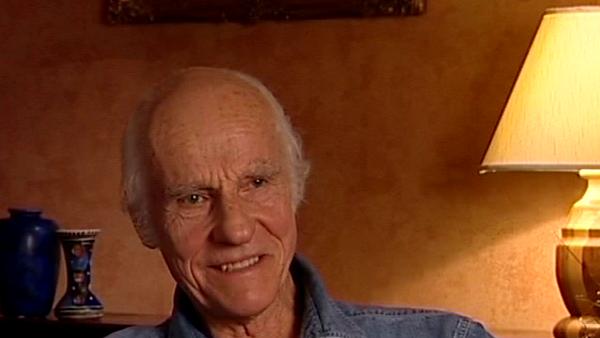NEXT STORY

Who gets the set-up?
RELATED STORIES

NEXT STORY

Who gets the set-up?
RELATED STORIES


|
Views | Duration | |
|---|---|---|---|
| 91. A furore over my permit to shoot Going in Style | 92 | 03:21 | |
| 92. Shooting Going in Style | 48 | 05:38 | |
| 93. The multiplex idea on the set of The Silent Partner | 37 | 05:41 | |
| 94. My only science fiction film: Saturn 3 | 85 | 06:20 | |
| 95. How do you teach cinematography? | 196 | 06:13 | |
| 96. Questioning cinematography techniques | 92 | 04:47 | |
| 97. Different tools and considerations in cinematography | 119 | 06:46 | |
| 98. Pola screens | 55 | 01:49 | |
| 99. Who gets the set-up? | 54 | 02:50 | |
| 100. The way I became more involved in the set-up | 57 | 04:22 |


I was saying about pola screens, and it's the one... the one filter that I will always have with me when I'm shooting on exteriors, and I use... I had a pola screen that was combined with an 85, so that it was all in one piece of glass. I never liked putting too many pieces of glass on the front, especially if you're using a zoom lens, because you get a sort of internal reflection building up sometimes and unwanted flares with more and more pieces of glass. So I used a pola screen combined with an 85, and I was saying it’s the one filter in which you can increase the contrast by cutting down the mist. But if you were using it say, with a sun flare on the water, then it would reduce the contrast by rotating it. And you... you can determine how much you want to reduce it. And I think it's the one filter which gives you enormous possibilities of control on location. I have used it very occasionally on interiors where you've perhaps got a reflection, a glass or something or a window that you've got to get rid of. But of course with a pola screen you lose nearly two stops, and on interiors to lose nearly two stops is quite a disadvantage. Whereas if you're shooting, say on a sunny location where you would perhaps be shooting at 16 and you don't want to stop down that far, by putting on the pola screen you can open up nearly two stops to more like eight, which is sometimes a... more of a stop you want to work with, you know, because the stop you're working at affects the depth of field. It depends how much depth of field you want to achieve.
Billy Williams, London-born cinematographer Billy Williams gained his first two Oscar nominations for the acclaimed “Women in Love” and “On Golden Pond”. His third nomination, which was successful, was for the epic “Gandhi”. He was President of the British Society of Cinematographers, and was awarded the Camera Image Festival’s Lifetime Achievement Award in 2000.
Title: Pola screens
Listeners: Neil Binney
Neil Binney began working as a 'clapper boy' in 1946 on spin-off films from steam radio such as "Dick Barton". Between 1948-1950 he served as a Royal Air Force photographer. From 1950 he was a Technicolor assistant technician working on films such as John Ford's "Mogambo" (photographed by Freddie Young), Hitchcock's "The Man Who Knew Too Much" (Bob Burke), and Visconti's "Senso" (G.R. Aldo/B. Cracker). As a camera assistant he worked on "Mind Benders", "Billy Liar" and "This Sporting Life". Niel Binney became a camera operator in 1963 and worked with, among others, Jack Cardiff, Fred Tammes and Billy Williams. He was elected associate member of the British Society of Cinematographers in 1981 and his most recent credits include "A Fish Called Wanda" and "Fierce Creatures".
Duration: 1 minute, 50 seconds
Date story recorded: September 2003
Date story went live: 24 January 2008